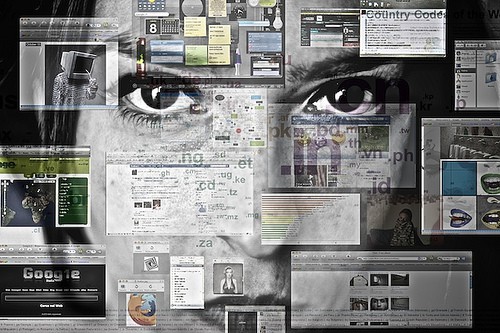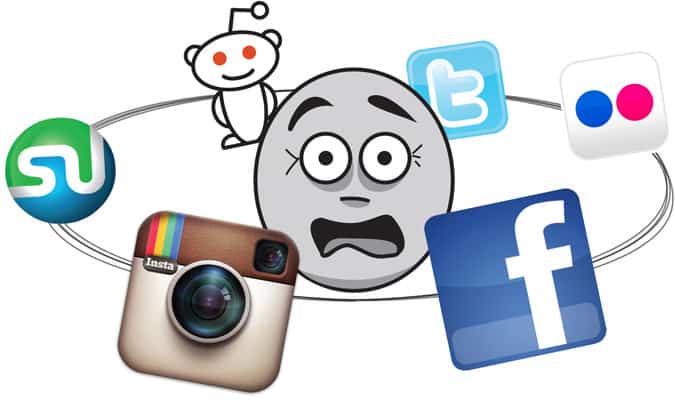
Anyone who advises on corporate communication and digital marketing is not a coach for work-life balance. Actually. But for communication concepts to work, they have to take the people involved into account with their needs – and at the same time, they are challenged to take care of themselves.

(Photo: © Wavebreakmedia, depositphotos.com)
Digital accessibility is not optional in professional corporate communication. How quickly and in line with target groups companies respond to the needs of users is decisive for purchases and customer loyalty. This poses significant challenges for all employees: Because someone has to be available around the clock. The various channels that users choose to contact are increasing – and do not always correspond to the paths that the company itself would prefer. They often change and are therefore often difficult to keep track of or challenging to monitor.
The demands on availability and responsiveness also increase in internal teamwork. Those who want to build a personal brand during these times, create visibility for their own company or want to position themselves and exchange ideas on specific topics, rely on social media. This applies to the self-employed just as much as to a large number of employees at all specialist and management levels. Added to this is personal, private communication, which has also changed and accelerated considerably in recent years: WhatsApp and other messengers, but also the right old email and privately used social media accounts require a lot of attention during working hours and leisure time.
It’s a miracle that it still works
I sometimes think it’s a miracle that we always get things sorted out. But who – depending on the actual, individual load – does not want to steer into digital burnout in a targeted manner, should consider strategies to deal with the daily requirements, with the multitude of messages. Ideally, you have to think about short-circuiting actions that could endanger digital values that have built up over the years. Because sustainably structured profiles and pages represent a value. Those who isolate themselves completely usually cut off not only from a large amount of irrelevant data noise but also from relevant information.
But now, almost every day, for example, I see annoying postings on Facebook from people who find it all too much. Discussions about data misuse among the platform providers as well as the fear of punishment for violating new data protection rules often do the rest: “I delete my account. You can reach me by email and phone.” You read then. Or: “It is all too much for me. I take a month off. Let’s see if I come back then. “Or:” I only read rubbish and politically doubtful here. I’ll be out later. “
Current trigger: often only the last impetus
But for many, the present occasion is only the previous trigger that overflows the barrel. What appeared to many people not so long ago as a new great channel for customer acquisition and exchange with like-minded people is increasingly becoming a burden.
A friend told me: “I feel like I have to be online practically day and night, even on weekends. Regularly new comments and reactions, plus private messages – and only a fraction of them are professionally relevant to me. “
Nevertheless, she was always tempted to scroll through her timeline, click on this video and follow that link: “Then a few hours passed in a flash.” The person concerned therefore no longer has anything on Twitter logged in. Whether – as planned – she will expand her activities in the LinkedIn business network, she now seems more than questionable.
Nowadays, there is no option for large brands or for sole traders to do without personal online communication. Anyone who advertises online and does PR must also be accessible online. Those who send out have to monitor reactions. You can’t automate that as much as possible, but people are always required.
Social networks: useful and stressful at the same time?

Those who are not personally involved and who refuse to talk outside of factual matters will remain entirely colourless for other people. Real relationships, and thus visibility and relevance, are only built up by those who are emotionally accessible and interact directly with others. If you just pour occasional messages and links into the status field, the algorithm will sort them out as irrelevant.
People prefer to speak to people who communicate authentically. This also applies to the professional area. Paradoxically, self-PR has the most significant impact if it is mostly free of advertising and PR messages. This is how communication in networks has always worked in principle: If you respond to others and also give them useful, helpful or entertaining content, you will receive support and will be recommended.
But this is precisely the problem: Social media work best when the whole person shows up and also brings in something personal. Furthermore, private and professional use mix on many platforms. At the same time, this means that even those who are committed primarily because of professional considerations cannot avoid being personally involved.
Of course, this also applies not only to freelancers and sole traders but also to employees in larger companies: In my opinion, you cannot implement a professional social media strategy on behalf of an employer unless you have personal experience in social networks.
Why does enthusiasm often become overloaded at some point?
Even today, many people still have significant reservations about social networks, also if they often use messengers like WhatsApp as a matter of course. But once they get involved, there is real enthusiasm among many. Entirely new possibilities open up in digital — resonance and visibility increase. For one thing, they suddenly get a lot of feedback and can learn from it. On the other hand, they suddenly gain access to an infinite amount of exciting content. This often results in more time being spent than initially estimated. It quickly passed several hours that you wanted to use differently.
At some point, you feel like you’re always on, and Facebook or Instagram is just one of many channels through which news comes in: messengers like WhatsApp, news portals and, last but not least, emails also call for attention.
But above all, it is probably your emotional involvement that can eventually turn into weariness. This happens all the more when clouds suddenly appear in the social media sky: bad comments from politically opposed people, unsubstantiated criticism or even insults and arguments. Then a defiant reaction often sets in. This sometimes leads to the person forgetting the professional distance with which he or she started.
Those who only move privately in social networks are at least apparently in a luxurious situation: they can stop at any time – even if they cut themselves off from information or even from their system. But what about those who cannot merely put the digital on the virtual nail for professional or business reasons?
Five antidotes to digital burnout

Once the big frustration is there, it may be (almost) too late to enjoy social networks again. A more extended break is often the best way to start again with a little distance. This way, you can find out what works best for you – and what doesn’t.
However, one crucial fact should not be forgotten: The digital change has changed our lives in private and professional life so far that the clock cannot only be turned back. We have to put up with the fact that we communicate more, faster and in significantly more ways than just a few years ago. It is, therefore, better to approach the matter constructively. This makes it easier to develop a strategy that enables you to profit professionally without feeling drained.
Here are my five antidotes to digital burnout:
1. Use professional tools.
Personal communication can also be organized professionally. That is why it does not have to appear impersonal or spontaneous in its external impact. The main focus is on the underlying processes, regardless of messages, content and dialogues. For example, it can help to filter emails in the inbox sensibly and automatically sort them into folders. Social media tools such as Buffer or SocialPilot make it possible to make at least parts of personal brand communication much more efficient. Project management tools such as Trello also make it easier for individuals to plan and organize work, schedule, collect notes and information, and many other processes. It is also worth considering
2. Allow yourself time budgets.
Professional activities in social media are part of the marketing (time) budget. This budget can be planned, at least if you remain flexible and learn from experience. It can be helpful, for example, to reserve only certain times a day for activities in digital media and then to strictly adhere to them. If you use tools anyway to record how much time you spend on which projects: Document social media times as well. It is also clear, and this applies to sole traders as well as to teams in groups: if more tasks are added, either the (time) budget has to be increased, for example through external support, or something else has to be done away with.
3. Schedule breaks.
Nobody always has to be present on social networks. Breaks, even longer ones, are entirely okay – whether on a more extended vacation or at the weekend. How you manage, this is up to your preferences. Don’t let anyone else talk you into it. Some people need an offline vacation; the other can also recover well with internet access. It is essential to arrange for representation in good time if necessary. Personal profiles can sometimes be more “silent”. Inquiries or messages to fan pages may still have to be answered.
If you are not taking a complete break, you could, for example, limit digital communication to your working hours for a specific time and, at least in your free time, also turn off notifications and push notifications.
By the way, even if the impression is often different: Nobody is obliged to issue an offline message every time he or she is not on Facebook or Twitter for a few days. Help yourself not to increase the noise floor by considering whether your network needs this information.
4. Do a strategy check.
At the latest, when you experience the tremendous social media frustration – or the first glimpses of it – it is time to take a moment: What is it that makes me feel that way? Where have I perhaps exceeded my limits? And: Why and how did I start? Am I still on my chosen line? Is my time management still correct?
It can also help to get professional feedback. Stay alert to other people’s reactions to what you contribute and to conversations. Perhaps you are doing a lot more than is necessary – or your contributions no longer consistently contribute to the communication strategy with which you started. It also means that you are open to criticism. After all, social networks are not only suitable for sending out as much as possible, but also for asking others for their opinions.
5. Accept natural fluctuations.
Last but not least: Nobody can always communicate with the same commitment and with the same energy. Where people interact, fluctuations are quite reasonable – both in terms of mood and performance. This does not only apply to social networks. For example, sometimes we go to meetings and events with pleasure. Another time we have a short detour to a good week in the stomach, and we would much rather stay in it for a while. In this respect, the idea of objectively perfect, consistent communication, regardless of the media, is an illusion anyway.
Those who accept this also make it easier for themselves to exchange information on social networks because the pressure is reduced. Such a view may even be the best insurance against digital burnout.
